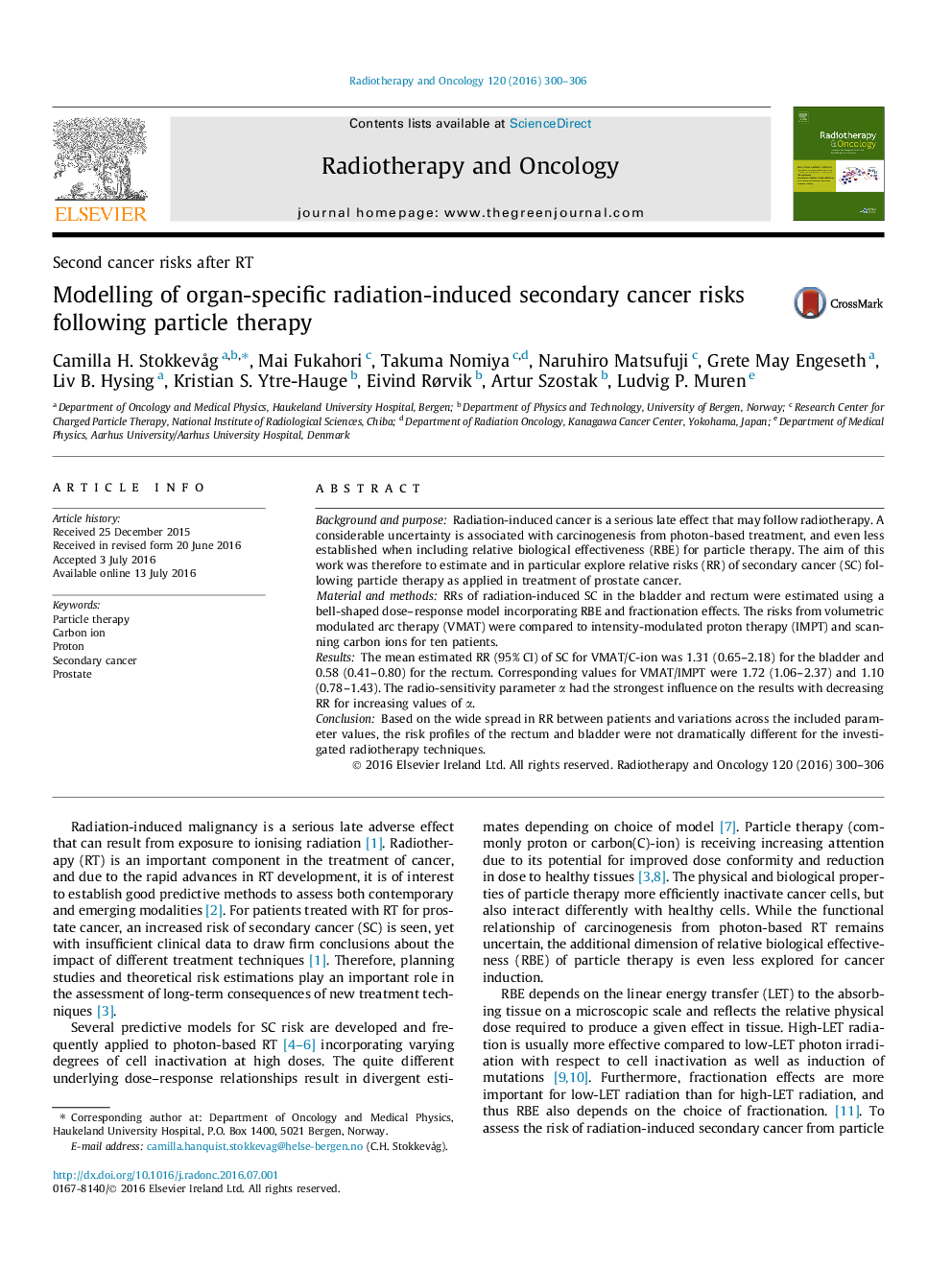| Article ID | Journal | Published Year | Pages | File Type |
|---|---|---|---|---|
| 5530032 | Radiotherapy and Oncology | 2016 | 7 Pages |
Background and purposeRadiation-induced cancer is a serious late effect that may follow radiotherapy. A considerable uncertainty is associated with carcinogenesis from photon-based treatment, and even less established when including relative biological effectiveness (RBE) for particle therapy. The aim of this work was therefore to estimate and in particular explore relative risks (RR) of secondary cancer (SC) following particle therapy as applied in treatment of prostate cancer.Material and methodsRRs of radiation-induced SC in the bladder and rectum were estimated using a bell-shaped dose-response model incorporating RBE and fractionation effects. The risks from volumetric modulated arc therapy (VMAT) were compared to intensity-modulated proton therapy (IMPT) and scanning carbon ions for ten patients.ResultsThe mean estimated RR (95% CI) of SC for VMAT/C-ion was 1.31 (0.65-2.18) for the bladder and 0.58 (0.41-0.80) for the rectum. Corresponding values for VMAT/IMPT were 1.72 (1.06-2.37) and 1.10 (0.78-1.43). The radio-sensitivity parameter α had the strongest influence on the results with decreasing RR for increasing values of α.ConclusionBased on the wide spread in RR between patients and variations across the included parameter values, the risk profiles of the rectum and bladder were not dramatically different for the investigated radiotherapy techniques.
